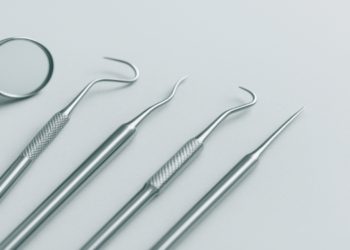Dermal fillers are a popular way to minimize signs of aging and achieve that youthful look in beauty and aesthetics. But what exactly are dermal fillers? Let’s delve into the details of what dermal fillers are, the various types available, and how they work to rejuvenate the skin.
What Are Dermal Fillers?
At their core, dermal fillers are gel-like substances injected beneath the skin to smooth lines, fill wrinkles, and add volume. Many dermal fillers contain a naturally occurring substance known as hyaluronic acid, which plays a crucial role in keeping the skin hydrated and voluminous. By injecting dermal fillers into targeted areas, cosmetic surgeons can enhance facial features, smooth deep wrinkles, and restore facial volume that’s often lost with age.
The Science Behind Dermal Fillers
Dermal fillers work by bolstering the skin’s connective tissue, essentially “filling” in areas where volume has been lost or wrinkles have formed. Hyaluronic acid, the main component in most dermal fillers, helps keep the skin moist and full by retaining water. When injected, dermal fillers not only add volume but also attract water to the injection site, further enhancing their volumizing effect.
Types of Dermal Fillers
There are different kinds of dermal fillers, each made for particular problems.
- Hyaluronic Acid (HA) Fillers: Among the most popular, HA fillers like Juvederm and Restylane are known for their ability to treat deep wrinkles and restore volume. They’re also used to enhance facial features such as the lips and cheeks.
- Poly L-lactic Acid (PLLA) Fillers: PLLA is a biodegradable synthetic substance. Fillers like Sculptra are used to stimulate collagen production, offering a more gradual improvement in skin texture and volume.
- Calcium Hydroxylapatite (CaHA) Fillers: Radiesse is a notable CaHA filler, using a mineral-like compound found in human bones to treat deeper wrinkles and enhance volume. It also stimulates collagen production for longer-lasting results.
- Polyalkylimide: A semi-permanent filler, often used for deeper facial wrinkles, enhancing the jawline, or even correcting facial asymmetry.
Each type of filler is chosen based on the patient’s unique needs, desired outcomes, and the specific area of the face being treated.
Dermal Filler Procedures: What to Expect
Undergoing a dermal filler procedure is typically a quick, outpatient procedure that can be completed within minutes to an hour, depending on the area being treated. Before the treatment, a cosmetic surgeon will examine your face and talk about what you want to achieve. A numbing cream may be applied to the injection site to minimize discomfort.
The injection process itself is straightforward. The filler is injected into the specific area with a thin needle. Patients may feel a slight pinch or pressure, but the procedure is generally well-tolerated.
Mild swelling or even a slight bruising at the injection site after the treatment is common and usually goes away in a few days. You can see the effects of dermal filler injections right away, and they can last from a few months to a couple of years, depending on the filler type and your metabolism.
Dermal fillers offer a versatile and minimally invasive option for those looking to address signs of facial aging, restore volume, and enhance their natural features. With a range of fillers available, there’s a solution for nearly every concern, from smoothing fine lines to sculpting and volumizing facial features. It’s important to consult to a qualified cosmetic surgeon to find the best option for you and get safe, effective results.
Enhancing Beauty with Injectable Dermal Fillers
In the quest for a younger and more radiant complexion, injectable dermal fillers stand out as a key player. These fillers not only offer a way to smooth wrinkles and refine facial contours but also present a less invasive alternative to traditional plastic surgery. Let’s explore how injectable fillers are revolutionizing the approach to cosmetic enhancements.
The Role of Injectable Dermal Fillers in Aesthetic Medicine
Injectable dermal fillers are a cornerstone in the field of aesthetic medicine, offering a tailored approach to combating facial aging. These fillers are adept at smoothing out skin folds, filling in thin lips, and diminishing the appearance of smile lines and frown lines. Some fillers not only reduce wrinkles but also improve skin quality, helping with acne scars and uneven textures.
Facial Fillers Versus Plastic Surgery
While plastic surgery provides permanent solutions for aesthetic concerns, injectable fillers offer a non-permanent, yet impactful alternative with minimal downtime. Patients can enjoy significant improvements in facial volume and wrinkle reduction without the need for a surgical procedure. This makes dermal fillers an appealing option for those seeking immediate results with limited recovery time.
The Evolution of Dermal Filler Products
There are many FDA-approved fillers available, each designed for specific facial areas. From products formulated to enhance the lips to those meant to treat deeper folds, the options are vast. Moreover, the ability to buy dermal fillers that are tailored to one’s specific needs has made personalized cosmetic treatments more accessible than ever.
Combining Dermal Fillers with Other Treatments
Dermal fillers can be used with treatments like Botox for an enhanced overall facial refresh. While fillers add volume and smooth out wrinkles, treatments like Botox relax the muscles that contribute to dynamic wrinkles, offering a more rounded approach to facial aging.
The Future of Dermal Fillers
The interest in less invasive beauty treatments is increasing innovation in dermal fillers. Recent advancements include the development of longer-lasting fillers and those that stimulate the body’s natural collagen production, promising even more natural and enduring results.
Injectable dermal fillers have revolutionized the field of cosmetic medicine, offering individuals a versatile, less invasive option for facial rejuvenation. Whether seeking to smooth wrinkles, enhance facial contours, or restore volume, there’s a dermal filler solution to meet nearly every aesthetic goal. Talking to a qualified expert is important for safe and good cosmetic results.With the right approach, dermal fillers can significantly enhance one’s appearance, boosting confidence and overall satisfaction with one’s look.
Frequently Asked Questions
What is the difference between filler and dermal filler?
“Filler” refers to any injected substance used to increase volume or smooth wrinkles. Dermal filler specifically refers to fillers used for cosmetic improvements in the skin, particularly the face.
What do dermal fillers do?
Dermal fillers restore volume to the face, smooth out wrinkles, and enhance facial features such as lips and cheeks, offering a more youthful appearance.
How long does a dermal filler last?
The longevity of a dermal filler varies by type, ranging from 6 months to 2 years, depending on the filler’s composition and the individual’s metabolism.
Which is better, Botox or dermal fillers?
Choosing between Botox and fillers depends on what the person wants to achieve. Botox is best for treating dynamic wrinkles caused by muscle movements, while dermal fillers are ideal for restoring volume and smoothing static wrinkles.
David Prior
David Prior is the editor of Today News, responsible for the overall editorial strategy. He is an NCTJ-qualified journalist with over 20 years’ experience, and is also editor of the award-winning hyperlocal news title Altrincham Today. His LinkedIn profile is here.













































































